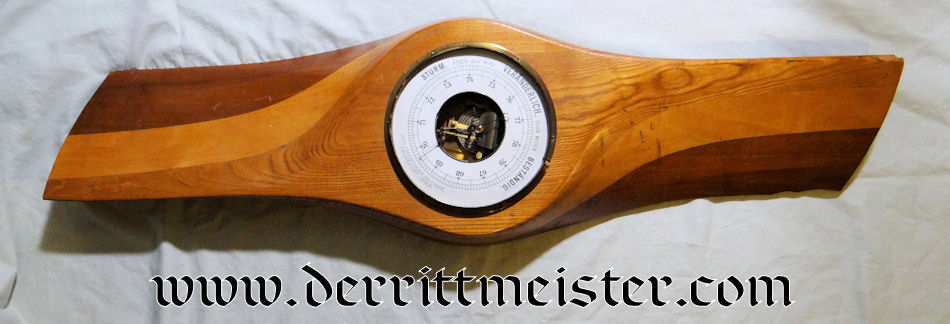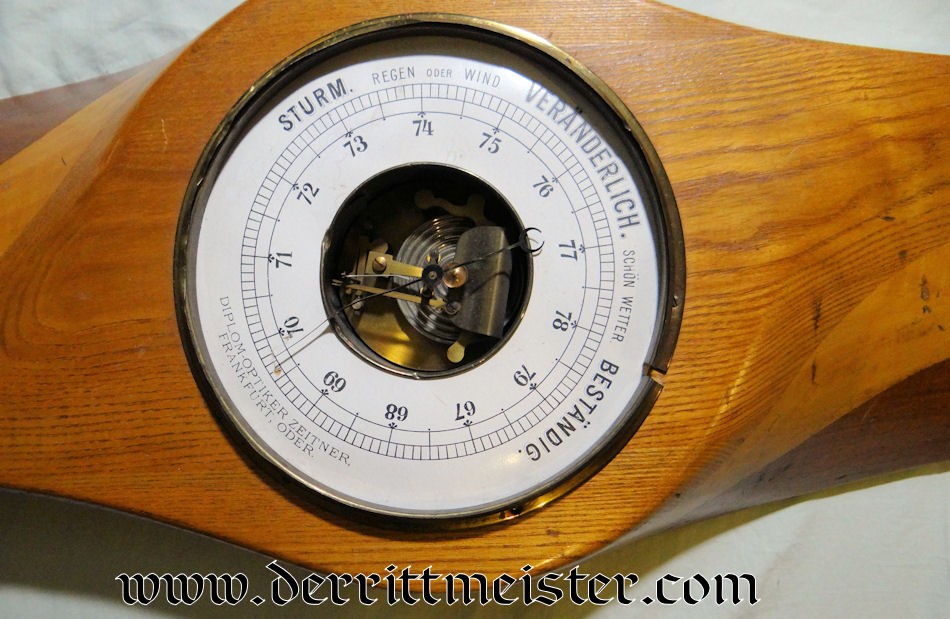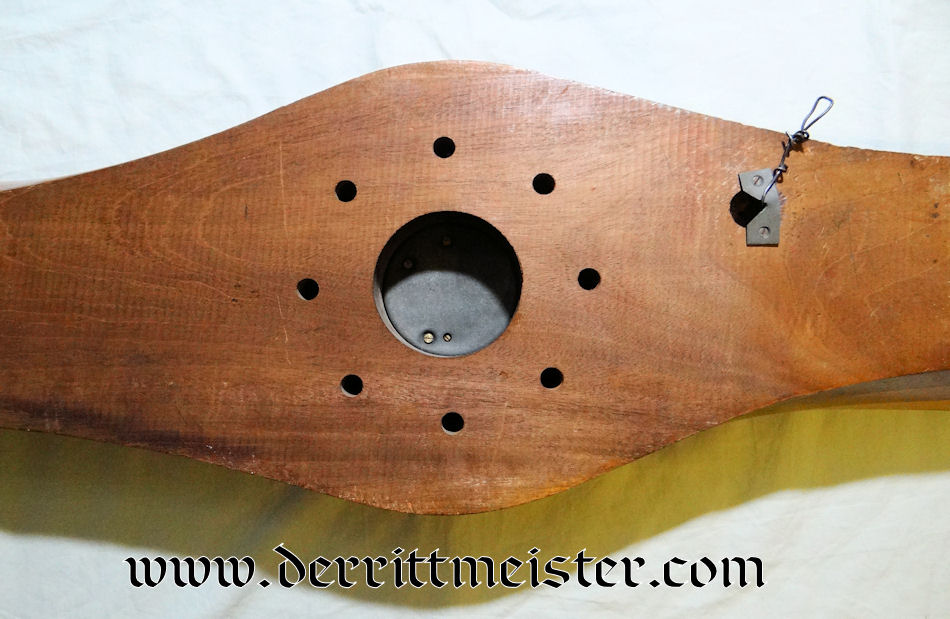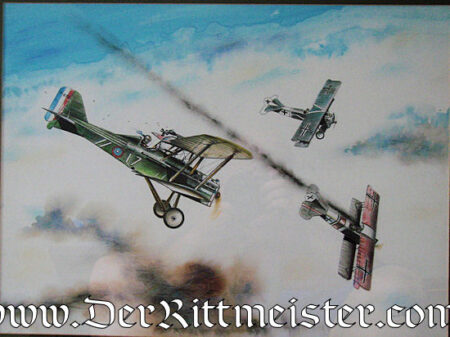Description
Today we introduce you to a large trench art piece. By definition, trench art was an art form wherein soldiers at the front (or recovering in a hospital from wounds) took discarded battlefield items such as shell casings, belt buckles, driving belts, and so on, then fashioned them into interesting and useful items prized by the folks on the home front. [Please note, not only soldiers near or at the front constructed these items. Some of the more complicated pieces were fashioned at home].
This item certainly falls into the trench art category. It is especially noteworthy because it comes from the Imperial German Air Service. Trench art from this military discipline are VERY difficult-to-find. I have seen some propeller-based pieces over the years, but never anything so large. The smaller pieces have always been items that one could set on a desk, such as photograph frames, ink blotters, and etc. One would have to procure a giant’s desk to display this beauty!
[Before I describe Mister “large-and-in-charge,” please allow me to digress with a description of a propeller’s construction]. Whenever one views an Imperial German Air Service propeller’s segment, one immediately is aware that it displays two different colors. The Germans took “slices” of wood and glued them together to make their propellers. These glued pieces often featured contrasting colors. I am not aware of any “technical” reason to use different-colored wood (or perhaps wood from a different kind of tree), it may just have been a matter of aesthetics. (I certainly am greatly-simplifying the manufacturing process, as a great deal of woodworking was involved in making all of a propeller’s pieces fit correctly into the end result). What makes this particular item so attractive and interesting is that it is large enough to comprehend the propeller’s scope. Sections of the propeller’s ends were removed (probably damaged), but one can still see the center’s hub. One can visualize how the complete propeller must have looked when mounted on an airplane. Propellers and landing gear were two of the most-damaged airplane parts, especially in the training schools. Student pilots frequently set their planes on their noses during landing. Since the propeller was still turning at a high rate of speed, its tips dug into the ground and broke].
Our piece today measures a whopping 34″ in length and 9″ in width. As you look at its obverse, you can actually see the different shades of wood that were glued together. It is quite striking. The center hub section (where the propeller was mounted to the engine with several large bolts) has been mounted with a combination thermometer/weather station. It is circular. The station is no longer operative, and is only useful for decorative purposes. It once sported a glass cover over it, which also is no longer present. Its reverse displays a single, old, mounting device. It is NOT sufficient to safely mount the piece for display. The item’s new owner will need to create a more secure mounting device for displaying the propeller securely on a wall. Naturally, other methods of display are available without mounting it to a wall. It is a very handsome piece, the likes of which will NOT be displayed on every collector’s wall!
[Due to its size and weight, additional charges will be incurred shipping it to your doorstep].






